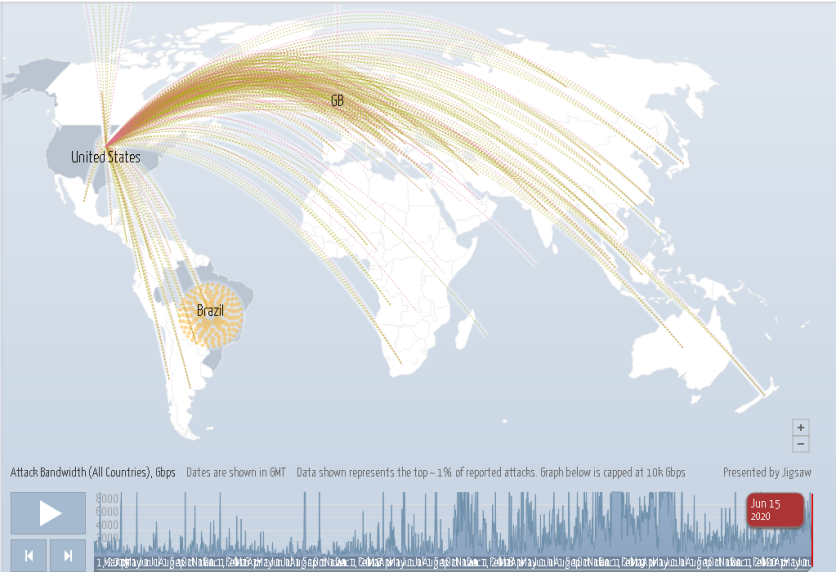America has been under attack as a widespread outage has been experienced on various online services. Suspicions of a coordinated attack rose as numerous online and communications service interruptions were reported in the United States.
The affected companies include T-Mobile, which is the third-largest mobile carrier in the US, Facebook, Messenger, Instagram, as well as the popular game Fortnite.

According to News.com, the issues were reported to have persisted for several hours. However, a tweet from an account allegedly related to the global hacking group Anonymous has made people consider the true severity of the situation.
DownDetector, a website that collates complaints to furnish reports of online service interruptions, showed a huge spike in complaints about some services on Monday, June 15.

T-Mobile subscribers complained that the network was down across the country as they couldn't make phone calls or send and receive text messages--although they were still able to use data. T-Mobile CEO Neville Ray said they are working on the issue to resume services.
Our engineers are working to resolve a voice and data issue that has been affecting customers around the country. We’re sorry for the inconvenience and hope to have this fixed shortly. — Neville (@NevilleRay) June 15, 2020
Similarly, other carriers like Verizon, AT&T, Cricket Wireless, and MetroPCS also had service interruptions. Meanwhile, games publisher Epic said it had trouble with its store and the popular game Fortnite.
DDoS attacks seem apparent, but experts dismiss it
A map from the website Digital Attack Map, which tracks the "top daily DDOS attacks worldwide," shows how the U.S. was targeted. A DDoS or a Distributed Denial of Service attack is designed to interrupt an online service while denying people from accessing it.
The recent attack apparently came from multiple sources, making it more difficult to stop. It overloaded a server with requests until it broke down. An ominous-looking map was shared on Twitter. Cybersecurity blogger Marcus Hutchins claimed, however, that there are some perfectly normal reasons for it to look like that.
The U.S. is currently under a major DDoS attack. https://t.co/7pmLpWUzUp pic.twitter.com/W5giIA2Inc — Anonymous (@YourAnonCentral) June 15, 2020
"This site shows a random sample of global DDoS traffic badly plotted on a world map. It does not indicate an attack against the US, it lacks context to make any inferences at all," he said in a tweet.
Hutchins said there was nothing special about the map and he was reluctant to conclude that it was a coordinated attack. "Without knowing the exact destination(s), other than they're within the US, no conclusions can be made," he said.
This site show a random sample of global DDoS traffic badly plotted on a world map. It does not indicate an attack against the US, it lacks context to make any inferences at all (other than DDoS attacks are happening all day every day). pic.twitter.com/8H9PqlIjbd — MalwareTech (@MalwareTechBlog) June 15, 2020
He also explained that the U.S. is the world leader in hosting, so the map may be showing only a bunch of unrelated DDOS attacks against various U.S. websites. He also said, "maps like this are nothing but marketing eye candy."
DDoS attacks amid coronavirus pandemic?
The recent attack is similar to what happened in the Australian Census website in 2016, as well as the Centrelink website in which millions of jobless Australians flooded the website when the pandemic began.
However, hours after claiming that the government website was hit by a DDOS attack, government services minister Stuart Robert took back his claim as the flood of traffic was due to hundreds of thousands of people who needed help in March. Regardless of whether the outages are due to a coordinated DDOS attack, the fact remains that services were down.




